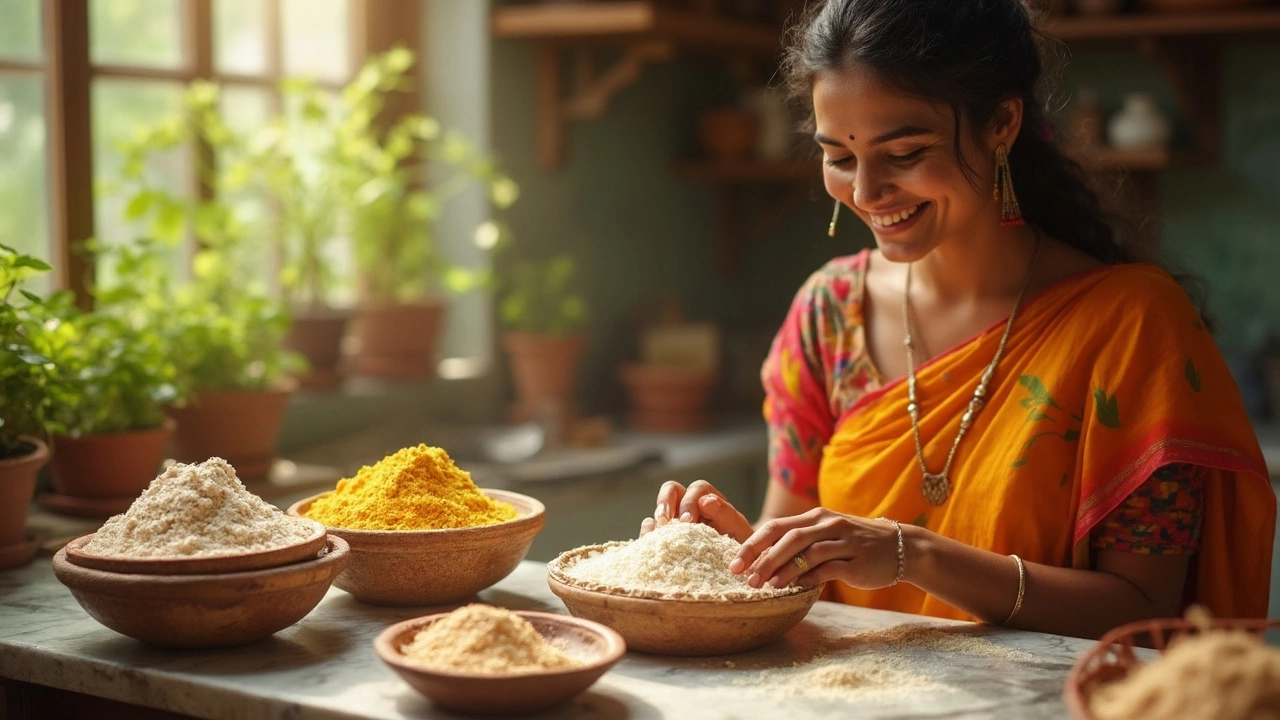Best Flour for Roti: Choose the Right Atta for Soft, Fluffy Flatbread
If you’ve ever tried making roti at home, you know the difference a good flour can make. The wrong flour gives you hard, dry pieces, while the right one gives you soft, pliable circles that puff up beautifully. Below we break down the most popular flours, what to look for, and simple tricks to keep your rotis tender every time.
Why Atta Matters More Than You Think
Atta is the Indian whole‑wheat flour traditionally used for roti. It’s milled from wheat that still has the bran and germ, so it’s higher in fiber and gives the dough a slightly nutty flavor. Not all attas are created equal. Some brands grind the wheat very finely, creating a smooth dough that rolls out easily. Others leave a bit more texture, which can make the roti a little denser. If you prefer a super‑soft roti, look for a fine‑milled, stone‑ground atta with a protein content around 10‑12%.
Beyond plain atta, many cooks experiment with blends. Whole‑grain multigrain mixes (adding millet, sorghum, or chickpea flour) boost nutrition and add a subtle taste. However, they also absorb more water, so you’ll need to adjust the dough’s hydration. A good rule is to start with the same amount of water you’d use for plain atta and add a tablespoon at a time until the dough feels soft but not sticky.
Tips to Get Perfect Rotis Every Time
1. Measure, don’t guess. Use a kitchen scale for flour and water. A 1:0.6 flour‑to‑water ratio (by weight) works for most attas. Adjust up or down based on the blend’s dryness.
2. Let the dough rest. After kneading, cover the ball with a damp cloth and let it sit for at least 15 minutes. Resting relaxes gluten and makes rolling smoother.
3. Rolling technique. Lightly dust the rolling board, but don’t over‑flour the dough. Too much flour will make the roti dry. Roll each piece into a 6‑inch circle, keeping the thickness even – about 2 mm.
4. High heat, quick flip. Heat a flat tawa or skillet until it’s hot (a few drops of water should sizzle). Place the roti, cook for 30‑40 seconds, then flip. When you see small brown spots, flip again and press gently with a cloth to puff up.
5. Store properly. Keep extra flour in an airtight container away from sunlight. A little cold storage (refrigerator) works for multigrain blends that can go rancid faster.
When you follow these steps, the type of flour becomes the final piece of the puzzle. Try a fine‑milled atta first, then experiment with a 70/30 mix of atta and oat flour for a slightly sweeter roti. You’ll notice the difference in texture and taste right away.
Remember, the best flour for roti is the one that fits your taste, your diet, and your kitchen routine. Start with a trusted brand, test a small batch, and adjust water and resting time as needed. Before long, you’ll be pulling soft, puffed rotis off the pan like a pro – no restaurant needed.
Best Flour for Soft and Tasty Roti: Choosing the Right One for You
Unravel the secrets behind choosing the best flour for roti. Get facts, tips, and flavor comparisons so you can make mouth-watering, perfectly soft rotis every time.
